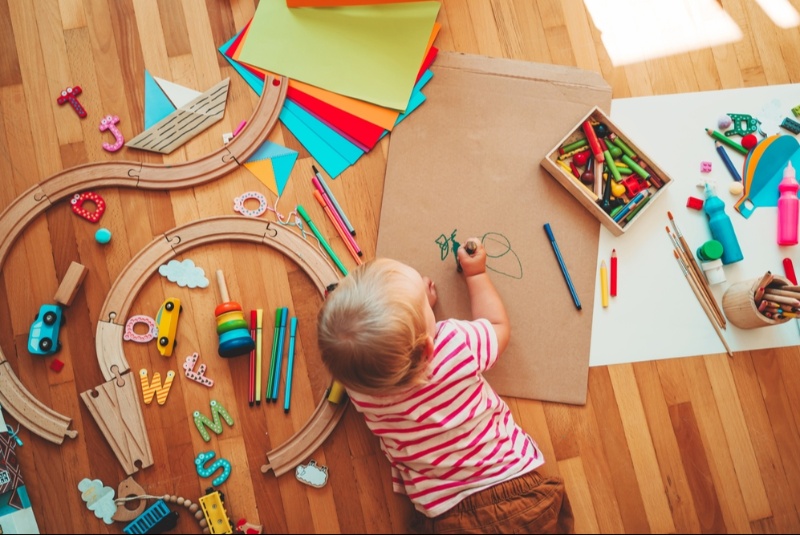Selecting the right toys for children is more than just choosing items that will keep them entertained. The best toys not only provide fun but also contribute to a child’s development, helping them learn new skills, explore their creativity, and develop critical thinking. With countless options available, it can be challenging to determine which toys offer the perfect balance between development and enjoyment. This guide offers practical tips for selecting toys that will foster your child’s growth while ensuring they have a great time playing.
Understand the Importance of Age-Appropriate Toys
One of the first things to consider when selecting toys for children is their age. Age-appropriate toys are designed to match the developmental stage of a child, ensuring they are both safe and engaging. For infants, toys that stimulate the senses, like soft rattles or colorful mobiles, are ideal. Toddlers benefit from toys that encourage exploration and fine motor skills, such as stacking blocks or simple puzzles. Preschoolers often enjoy toys that promote imaginative play and problem-solving, like dress-up kits or construction sets. By choosing toys that align with your child’s age, you can support their developmental milestones and keep them engaged in play.
Prioritize Safety and Durability
Safety is a top priority when selecting toys for children. Ensure that the toys you choose are made from non-toxic materials, have no small parts that could pose a choking hazard, and are sturdy enough to withstand rough play. Check for safety certifications, such as ASTM or CE marks, which indicate that the toy meets safety standards. Durability is also important, especially for younger children who may be more prone to dropping or throwing toys. Investing in well-made, durable toys not only ensures safety but also provides long-lasting enjoyment for your child. By prioritizing safety and durability, you can give your child toys that are both fun and reliable.
Encourage Creativity and Imagination
Toys that encourage creativity and imagination are essential for a child’s cognitive development. These toys allow children to explore new ideas, create their own stories, and express themselves in unique ways. Art supplies, such as crayons, markers, and clay, are excellent for fostering creativity, as they give children the tools to bring their ideas to life. Building blocks, dolls, and action figures also promote imaginative play, allowing children to construct worlds and scenarios. By selecting toys that inspire creativity, you help your child develop problem-solving skills, enhance their ability to think outside the box, and nurture their imagination.
Support Physical Development with Active Play Toys
Active play is crucial for a child’s physical development, helping them build strength, coordination, and motor skills. Toys that encourage movement, such as balls, ride-on toys, and tricycles, are great for promoting physical activity. For toddlers and preschoolers, toys like balance bikes, jump ropes, and hula hoops help develop balance and coordination. Outdoor toys, such as swings, slides, and climbing sets, also encourage active play and provide opportunities for social interaction. By choosing toys that promote physical activity, you support your child’s overall health and well-being while allowing them to burn off energy in a fun and engaging way.
Look for Toys That Promote Social Interaction
Social interaction is a key component of a child’s development, and toys can play a significant role in encouraging cooperative play and communication. Board games, puzzles, and building sets that can be shared with others help children learn to take turns, share, and work together toward a common goal. Role-playing toys, such as play kitchens, doctor kits, and costumes, also foster social skills by allowing children to engage in pretend play with friends or family members. By selecting toys that encourage social interaction, you help your child develop important communication skills, learn about teamwork, and build relationships with others.

Choose Toys That Stimulate Cognitive Development
Cognitive development involves learning how to think, understand, and solve problems, and toys can be powerful tools in this process. Educational toys, such as puzzles, memory games, and sorting activities, challenge children to think critically and use their problem-solving skills. Toys that introduce concepts like numbers, letters, shapes, and colors, such as counting blocks or alphabet puzzles, also contribute to cognitive development. For older children, science kits, strategy games, and coding toys provide more complex challenges that stimulate thinking and reasoning. By choosing toys that stimulate cognitive development, you help your child build a strong foundation for future learning.
Balance Fun and Learning with Educational Toys
While it’s important to choose toys that support development, it’s equally important that these toys are fun and engaging. Educational toys that are designed to be enjoyable can make learning feel like play, encouraging children to explore and discover new things without feeling pressured. Look for toys that combine educational content with interactive features, such as electronic learning tablets, music instruments, or interactive books. These toys often incorporate games, challenges, and rewards that keep children motivated and entertained. By balancing fun and learning, you can provide your child with toys that not only educate but also captivate their interest.
Consider Your Child’s Interests and Preferences
Every child is unique, with their own set of interests and preferences. When selecting toys, it’s important to consider what your child enjoys and what activities capture their attention. If your child loves animals, for example, animal figurines, stuffed animals, or a toy vet kit might be ideal choices. For children who enjoy building and creating, construction sets, LEGO kits, or model kits can provide hours of entertainment. By paying attention to your child’s interests, you can choose toys that resonate with them, making playtime more enjoyable and meaningful.
Invest in Open-Ended Toys for Extended Play
Open-ended toys are those that can be used in a variety of ways, allowing children to explore different possibilities and extend their playtime. Unlike toys with a single purpose, open-ended toys can grow with your child, offering new challenges and opportunities as they develop. Building blocks, for example, can be used to create structures, patterns, or even imaginative scenes. Art supplies, such as clay or paint, can be used in countless creative projects. By investing in open-ended toys, you provide your child with versatile tools that encourage exploration, creativity, and sustained engagement.
Rotate Toys to Maintain Interest and Engagement
Children can quickly lose interest in toys if they are always available, so rotating toys can help keep playtime fresh and exciting. By periodically switching out the toys that are accessible to your child, you can reintroduce older toys as if they were new, reigniting your child’s interest in them. This approach also allows you to manage the number of toys in play at any given time, reducing clutter and encouraging your child to focus on a smaller selection of toys. By rotating toys, you can maintain your child’s engagement and ensure that each toy continues to offer developmental benefits over time.
Choosing the best toys for children involves more than just selecting items that provide entertainment. By considering factors such as age-appropriateness, safety, creativity, and cognitive development, you can select toys that not only delight your child but also support their growth and learning. Whether you’re choosing toys that promote physical activity, social interaction, or cognitive skills, the key is to find a balance between fun and educational value. With the right toys, you can create an enriching play environment that fosters your child’s development and provides endless opportunities for exploration and enjoyment.




